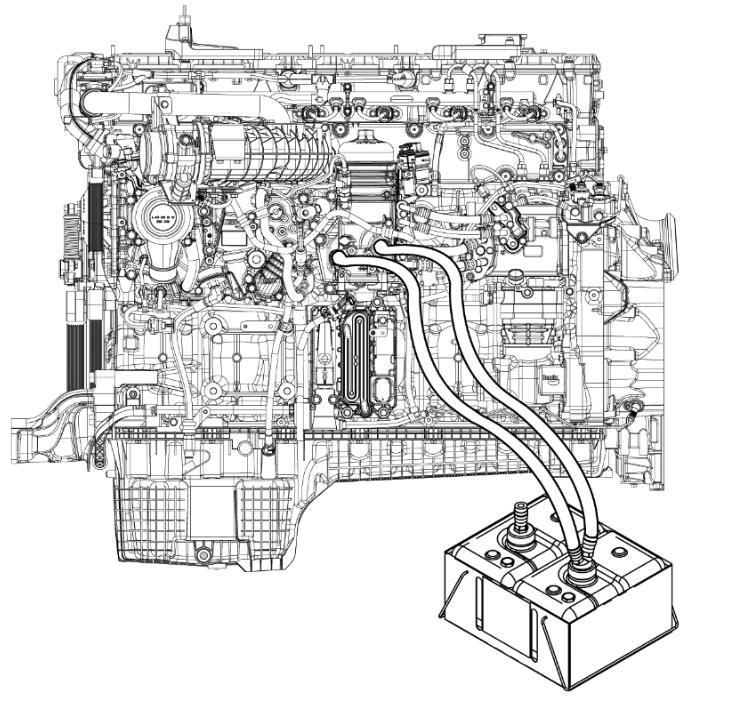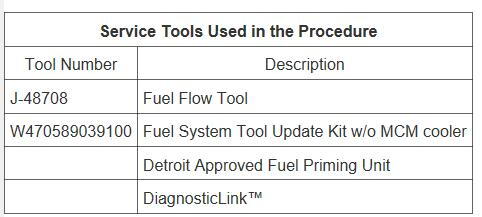Detroit Diesel engine test is used to determine if the cause of a hard start or no start condition is on the engine side or the chassis side.One critical procedure that requires attention is priming and testing the fuel system. This article will provide a step-by-step guide to help you accurately prime the fuel system using a Detroit-approved priming unit, and perform a fuel system integrity check. Following these procedures will ensure optimal performance and prevent any potential starting issues.
Related Contents:
jpro dla+ 2.0 adapter
Nexiq USB Link 2 Vehicle Heavy Duty Truck Diagnostic Tool
Step 1: Prime the fuel system using a Detroit-approved priming unit
To begin, prime the fuel system using a Detroit-approved priming unit. This step ensures that fuel is properly distributed throughout the system. It is crucial to follow the manufacturer’s instructions for the priming unit to ensure an effective priming process.
Note: After priming, it is essential to perform a road test to purge any remaining air from the system. This helps maintain the fuel system’s integrity and prevents potential starting issues.
Step 2: Disconnect the chassis-side fuel supply and return lines
Next, disconnect the chassis-side fuel supply and return lines from the fuel filter module. This step allows for further inspection and testing of the fuel system.
Step 3: Install the J-48708 Fuel Flow test lines onto the fuel filter module
Using the appropriate adaptors from the W470589039100 Fuel System Tool Update Kit, install the two J-48708 Fuel Flow test lines onto the fuel filter module. Ensure that the other end of the test lines is connected to the J-48708 fuel flow container. The container should contain enough fuel to run a Fuel System Integrity Check (FSIC) and have at least two liters (2.11 qt.) of fuel remaining.
Note: It is essential not to move or disturb the Fuel System Update kit and lines during the next steps to keep the ends of the lines submerged in fuel.
Step 4: Prime the fuel system using the hand-priming pump
Use the hand-priming pump to prime the fuel system. This manual priming process helps ensure proper fuel circulation and eliminates any remaining air pockets within the system.
Step 5: Run the Automatic FSIC using DiagnosticLink
Connect DiagnosticLink to the vehicle and access the Service Routines section. Select the Fuel System Integrity Check (FSIC) tab and run the Automatic FSIC. This test enables the detection of any potential issues within the fuel system.
Step 6: Restart the engine after 15 minutes
Allow the engine to sit for 15 minutes, then restart it. This step helps verify if there are any hard start or no start issues present. If there are any starting issues, proceed to step 7a; otherwise, go to step 8.
Step 7a: Verify connections and restart from step 4
If there was a starting issue, verify all connections are tight and ensure that the ends of the fuel lines remain submerged in fuel. Restart the process from step 4 to address the starting issue.
Step 7b: Proceed to step 8
If there were no starting issues, proceed to step 8.
Step 8: Allow engine to sit for verification
Allow the engine to sit for an adequate period to verify if any previous hard start or no start complaints persist. This step ensures that the fuel system is functioning correctly before proceeding.
Step 9: Start the engine
Start the engine and observe its performance. A smooth start without any issues indicates that the fuel system is in good condition.
Step 10a: Continue diagnostics on the engine side
If there is a starting issue, refer to the section “Hard Start/No Start – Two-Filter Fuel System (This Test Must Be Done First)” to continue diagnosing the problem on the engine side.
Step 10b: Check chassis fuel system lines per OEM procedures
If there were no starting issues, it indicates that the cause of the hard start or no start condition lies on the chassis side. In this case, check the chassis fuel system lines following the OEM procedures.
Priming and testing the fuel system is crucial to ensure optimal engine performance and prevent any potential starting issues. By following the step-by-step guide provided in this article, you can effectively prime the fuel system using a Detroit-approved priming unit, and perform a fuel system integrity check. Remember to always prioritize safety precautions and adhere to manufacturer guidelines throughout the process.


Leave a Reply